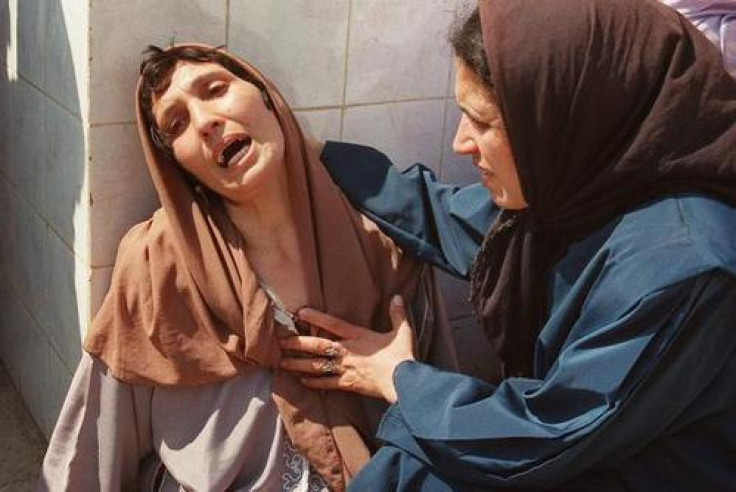The Madonna Of Bentalha: The Iconic Image From Algerian Civil War

The seizure of a multinational gas processing facility -- and the abduction of dozens of foreign workers -- in southeastern Algeria by Islamic militants highlights the continuing threat posed by jihadists to the Algerian state and society.
The battle for Algeria’s soul remains a violent tug-of-war between the repressive government in Algiers, leftists and secularists demanding greater rights and an expansion of democracy, and fundamentalist Islamic militants who wish to transform the country into a state that features Shariah law.
Algeria may have largely avoided the turmoil of the Arab Spring, which toppled governments in neighboring Tunisia, Libya and Egypt, but the Algerians are intimately familiar with horrific bloodshed.
Indeed, for much of the 1990s, an extraordinary civil war raged across Algeria -- at the cost of up to 200,000 lives – between the government and various Islamist rebel groups, including the Groupe Islamique Armé (GIA), or Armed Islamic Group. One of the principal leaders of GIA, Mokhtar Belmokhtar, reportedly masterminded Wednesday’s attack on the gas plant of In Amenas.
The civil war of the 1990s featured dozens of frightening massacres of civilians, many by the GIA, which wiped out entire villages of men, women and children.
One of the most notorious of these atrocities occurred in the village of Bentalha, about 10 miles south of Algiers, in 1997 during the peak of the Islamic insurgency against the state -- the most iconic image of that brutal war came from the aftermath of that mass murder.
On the night of Sept. 22 of that year, anywhere from 200 to 400 villagers were massacred by guerrillas armed with machine guns, hunting rifles and machetes. According to eyewitness accounts, limbs were cut off, throats were slashed, babies were smashed against walls, and women were raped.
On the day after, a photographer working from Agence-France Presse named Hocine Zaourar snapped a photo of a woman outside a hospital, mourning the deaths of three family members.
That heartbreaking photo found its way onto the front pages of newspapers in Europe and around the world. Somewhat reminiscent of Pablo Picasso’s "Guernica," the expression of sorrow over unspeakable loss symbolized the insane brutality of a civil war that victimized the poor and the powerless.
Eventually, the tragic woman was called the Madonna of Bentalha -- indeed, her look of resignation and melancholy recalls the Madonna of Michelangelo’s Pieta sculpture (even the Algerian woman’s head garment is similar to the wimple Mother Mary wears).
In addition, the bright blue and pink colors in the background bring to mind paintings of the Madonna created by such Renaissance artists as Titian and Raphael.
Zaourar won prestigious photography awards for the unforgettable image, but controversy soon erupted.
The woman depicted in the photo, Umm Saad, was outraged that she, a Muslim woman, was being equated to the Christian icon Madonna. She even tried to file a suit against AFP for “defamation” and “exploitation of human suffering.”
In addition, Zaourar was accused of artificially staging the photo for the purposes of pro-government propaganda. Even the Algiers government was unhappy over the photo’s mass distribution, since they objected to journalists publicizing the savage disorder scarring the country.
Eventually, Zaourar was banned from working in Algeria.
Troubling questions remain about the true culpability of the Bentalha massacre. A survivor named Nesroullah Yous, who later emigrated to France and published a book called “Qui a tué à Bentalha?” ["Who killed Bentalha?"], suggested the Algerian government was responsible since the army, who normally kept a heavy presence in the area, did nothing to prevent the massacre. (His book was, of course, banned in Algeria.)
© Copyright IBTimes 2024. All rights reserved.











